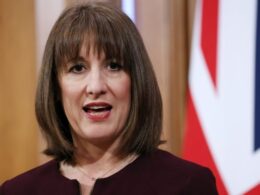Unlock the White House Watch newsletter for free
Your guide to what the 2024 US election means for Washington and the world
After weeks of US diplomatic overtures laced with military threats, the Trump administration and Iran have finally begun scoping out the potential for resolving the escalating crisis over Tehran’s expansive nuclear programme. At the weekend, US envoy Steve Witkoff and Iranian foreign minister Abbas Araghchi held indirect talks in Oman, which both described as constructive. Importantly, the parties agreed to follow-up talks this weekend.
It is a welcome first step that signals both US President Donald Trump and Iran’s supreme leader Ayatollah Ali Khamenei want a deal to avert the risk of military confrontation. The challenge now is for the parties to maintain the momentum and engage seriously if they are to overcome deep distrust and reach a sustainable agreement that reverses Iran’s dangerous nuclear advances. The stakes could not be higher.
In the past six years, Iran has become a nuclear threshold state, with the capacity to produce sufficient fissile material for multiple weapons within weeks. While insisting its programme is for civilian purposes, it enriches uranium to levels only used for nuclear bombs. Its path puts it on a collision course with the US and Israel.
Trump himself bears much responsibility for the crisis, through his decision seven years ago to withdraw from the 2015 accord Iran signed with the Obama administration and impose swingeing sanctions on the republic. Predictably this prompted the regime to respond by ramping up its enrichment process. Trump destroyed an accord that Iran was complying with and that severely capped its nuclear activities and imposed stringent monitoring.
Now Trump wants to force the genie back into the bottle. He insists he prefers a diplomatic solution and does not want the US embroiled in Middle East wars. But he has repeatedly warned of military action if diplomacy fails. Israel is also pushing the military option after dealing Iran and its proxies devastating blows in waves of air strikes last year.
US hawks and Israeli Prime Minister Benjamin Netanyahu are also urging Trump to pressure Iran into accepting full dismantlement of its nuclear programme. That is a red line for Khamenei, who does not want to appear to be cowed into capitulation. Yet Iran should realise that it is weak, and Israel is emboldened and overconfident. It must be serious about reaching a deal.
Tehran had the chance to seal an agreement with the Biden administration to revive the 2015 accord, but stubbornly spurned the chance. It is in a far weaker position now, and has rarely been more vulnerable to US and Israeli strikes. Popular disillusionment with the theocratic leadership is at an all-time high. The ailing economy is strangled by sanctions.
Trump’s team should seek a deal that neutralises Iran’s nuclear threat, while accepting that to succeed both parties will need to make compromises. Any agreement has to reverse the gains Tehran has made, put strict limits on its enrichment programme over a long timeframe and include a robust monitoring mechanism. In return, there should be meaningful sanctions relief.
There is no time to waste. A potential flashpoint is looming in the autumn as European powers threaten to trigger a “snapback” process before key clauses of the 2015 accord expire in October, if diplomacy fails. That would reinstate UN sanctions on Iran. Tehran has warned it would retaliate by leaving the non-proliferation treaty, heightening the risk of US and/or Israeli strikes.
Another Middle East war would be calamitous. Strikes may also not destroy Iran’s nuclear facilities, but could push its programme further underground and convince Khamenei to go for a bomb. The narrow opening for a diplomatic deal must not be squandered.
Source link









